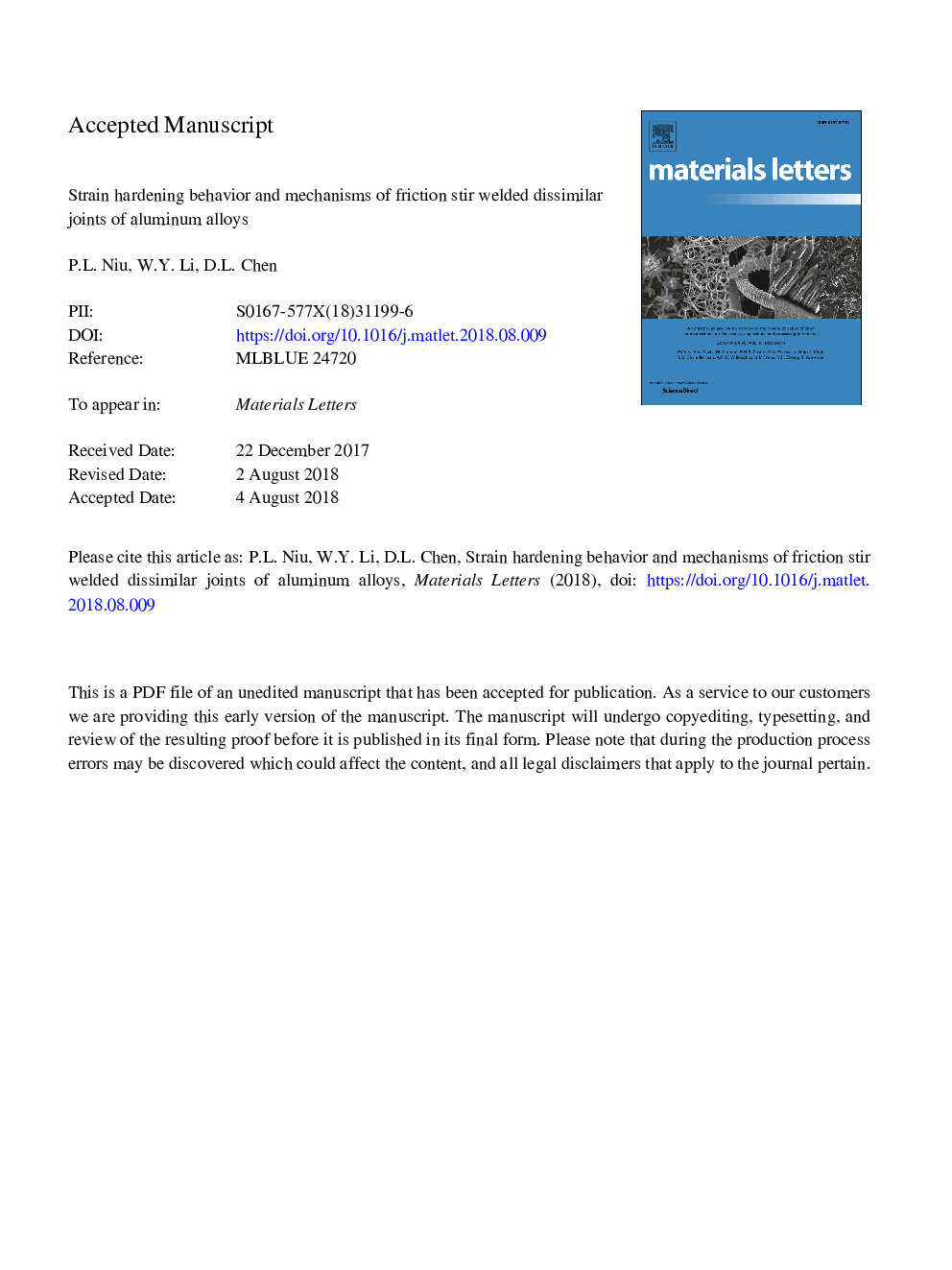| Article ID | Journal | Published Year | Pages | File Type |
|---|---|---|---|---|
| 8012304 | Materials Letters | 2018 | 12 Pages |
Abstract
Al-Cu alloy was friction stir welded (FSWed) with Al-Zn and Al-Mg alloys, respectively. Tensile properties, strain hardening behavior and fracture mechanisms of the FSWed dissimilar joints were evaluated. Results reveal that the strain-hardening rate of Al-Cu/Al-Zn dissimilar joint is higher than that of base metals due to the presence of finer recrystallized grains in the stir zone, while the strain-hardening rate of Al-Cu/Al-Mg dissimilar joint lies in-between those of base metals. The hardening level of Al-Cu/Al-Zn joint after tensile deformation, defined as HVf/HVw (a ratio of microhardness of fractured joints to that of as-welded joints), exhibits an 'M' shape across the welded joint.
Related Topics
Physical Sciences and Engineering
Materials Science
Nanotechnology
Authors
P.L. Niu, W.Y. Li, D.L. Chen,
